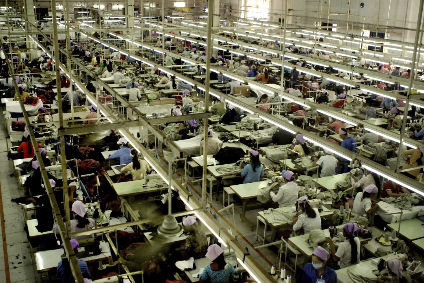
Twenty-two brands and retailers invited more than 2,000 global suppliers to participate in the annual Better Buying survey |
Amid the challenges and ongoing uncertainty thrown up by the global coronavirus pandemic, some apparel and footwear brands and retailers appear to be engaging more with their suppliers in key areas like planning and forecasting, a new survey shows.
Their efforts will enhance suppliers’ abilities to plan their production responsibly and provide reliable employment to their workers, according to the 2020 Better Buying Index Report published today (29 October).
The latest global survey from the Better Buying Institute underscores the importance of better purchasing practices by brands and retailers in meeting post-Covid demand and protecting supply chain workers during pandemic recovery. But it also highlights how there is still some way to go to improve supply chain resiliency.
Twenty-two brands and retailers invited more than 2,000 global suppliers to participate in the annual survey, which examines the impact of company purchasing practices – such as planning and forecasting, cost and cost negotiation, and payment and terms – on profitability, business relationships and working conditions.
The report found several brands had made meaningful improvements to their purchasing practices over the past year. This will not only yield benefits in terms of production efficiency and reduced financial pressure on manufacturers, but will also help suppliers maintain a more stable workforce and reduce their reliance on temporary labour or excessive overtime to flex their production capacity with unexpected increases or decreases in orders.
All of which is especially important as brands weather unexpected supply chain disruptions such as the pandemic, report authors say.
“Unplanned disruptions like Covid-19 tend to cause extreme reactions from buyers attempting to minimise their exposure to short-term financial risk – reactions that often do not consider the ripple effect on suppliers and workers and the other resulting risks,” says Dr Marsha Dickson, president of the Better Buying Institute.
“While the impacts of the pandemic have certainly created new challenges in global supply chains, problematic purchasing practices are nothing new and must be addressed in order to meet rebounding consumer demand and protect decades of sustainability progress.”
Luna Lee at Eileen Fisher, which asked its suppliers to participate in the survey, adds: “Worker wellbeing is incredibly important to our brand, and it matters to our consumers. Better Buying is an important supplier voice tool to help us uphold equal partnership, providing reliable data to help us identify areas of focus in purchasing practices that will best serve worker well-being.”
Better Buying examined year-over-year improvements for ten of the participating brands to identify progress and trends.
While there have been notable steps taken in each area, progress is ongoing and must be prioritised by all brands in order to continuously improve supply chain resiliency, the report notes.
Among the key findings:
- Data collected in 2019 showed five of the ten companies that had completed a previous ratings cycle made year-on-year improvements to their Planning & Forecasting practices – providing suppliers with visibility to plan production responsibly and ensure ongoing employment for workers. Eight of the ten companies had fewer suppliers with un-utilised capacity due to forecasting inaccuracies, and six of the ten had fewer suppliers left with excess materials.
- Half of the companies improved their Cost & Cost Negotiation practices, with a higher percent of suppliers reporting all orders were priced to cover the costs of compliant production. Eight of the ten companies decreased their use of high-pressure cost negotiation strategies. Improved costing is critical not only for suppliers’ business survival, but also for ensuring safe conditions for workers – protecting them from excessively low wages, unauthorised subcontracting, informal employment, and other precarious or abusive situations.
- At least half of the ten companies made notable improvements in Payment & Terms practices by paying suppliers on time and in full. As highlighted to a new degree during the pandemic, this is critical for suppliers’ cash flow and ability to pursue all aspects of sustainability. Four companies decreased their late payments by an average of ten days – an improvement with direct links to suppliers’ ability to make wage payments to workers.
Better Buying Institute also offers the following conclusions based on data provided by suppliers:
#1: Buyers can and are making numerous improvements in Planning & Forecasting, even though it is seen as a more difficult purchasing practices area to improve given market uncertainties. Progress here will enhance suppliers’ abilities to plan their business and provide reliable employment to workers.
#2: Understanding the extent that buyers’ orders are priced to cover all the costs of compliant production provides valuable evidence of progress on commitments to fair/living wages.
#3: Objective business data collected from suppliers improves understanding of how a buyer’s purchasing practices may contribute to human rights abuses in their supply chains, and is a new and valuable approach to human rights due diligence.
A separate survey has also highlighted ongoing disparities in purchasing practices, suggesting fashion brands and retailers are continuing to undermine their garment suppliers by driving down prices and imposing onerous payment schedules on new orders: Sourcing squeeze continues for global garment suppliers.
And another new report has looked at the problem from the perspective of the denim and jeans industry: The denim supply chain is broken. Here’s how to fix it.
